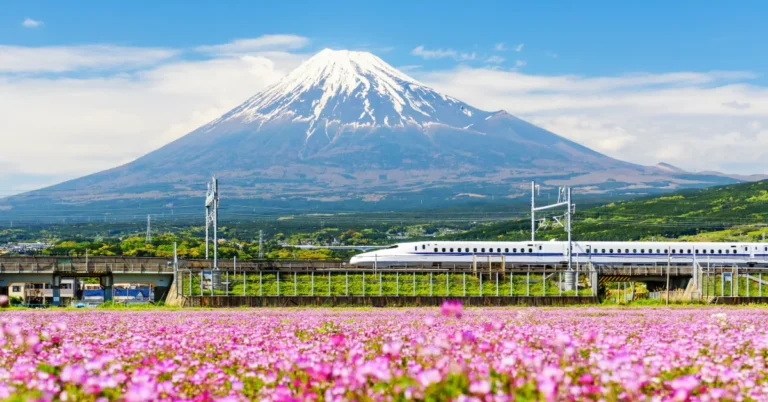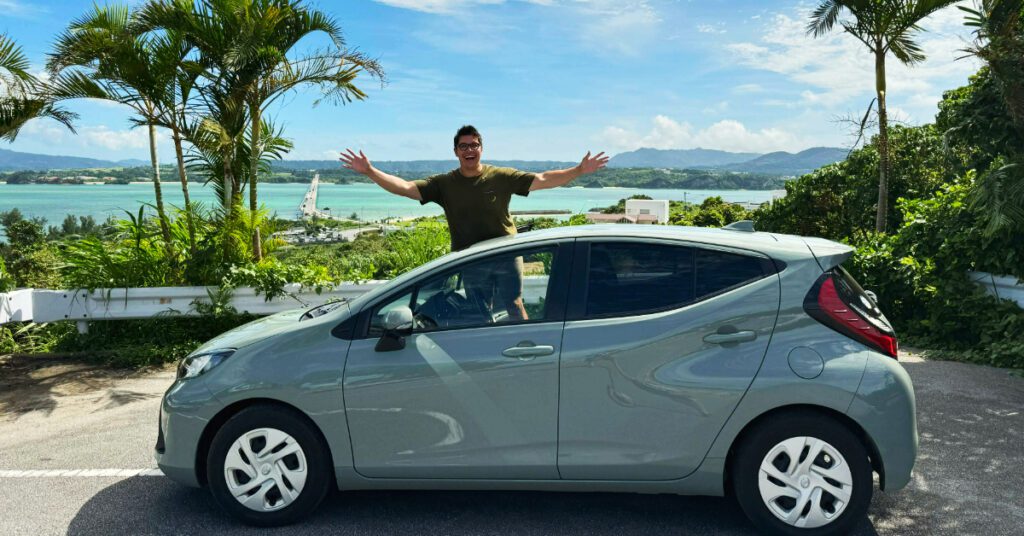
Renting a car in Japan may look like a daunting task at first, but in reality it’s super easy and renting a car in Japan is one of the best travel decisions we ever made. We look back at our road trips in Japan with so many fond memories, that we’ve made this comprehensive car-rental-in Japan travel guide for you. This way you’ll know exactly what to do. We’ll share everything you need to know, including our favorite Japanese car rental website and tips to make your road trip in Japan a great success. The hardest part of your trip will be saying goodbye to your ride!
This post contains affiliate links. If you make a purchase through them we may earn a small commission at no extra cost to you.
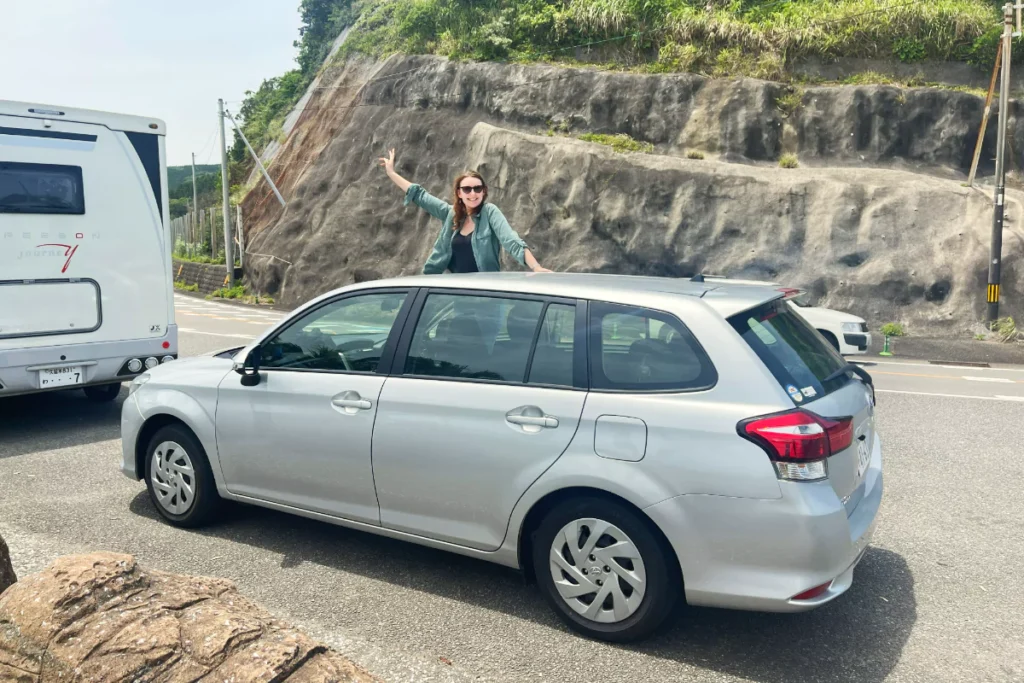
What Do You Need to Rent a Car in Japan?
If you want to rent a car in Japan, you need to be at least 18 years old. Before booking your ride, make sure that you’re able to get all these essential documents:
- An Official Driver’s License: Important since you need to be able to actually drive a car and you’ll need it along with your International Driving Permit.
- International Driving Permit (IDP): Absolutely necessary for foreign drivers and check in your country on how to apply for it. Be aware that only the International Driving Permit that’s issued under the Geneva Convention of 1949 with a validity of 1 year is valid in Japan, and the IDP from 1968 is not.
Visitors from a few countries need a Japanese translation of their driver’s license instead of an IDP. You can check on the Japan Automobile Federation’s website if that’s the case for you.
Of course you also need:
- Valid Passport: Required for identity verification at the counter.
- Credit Card: Needed for the deposit and it acts as your financial security.
What Are the Best Places to Rent a Car in Japan?
Before you can even think of picking-up your car, you need to find a rental place that will suit your car needs on journey. Japan offers a mix of international chains and local rental companies, so you have many places and types of cars to choose from.
On the budget-friendly side, companies such as Budget or Oryx rent-a-car often offer the cheapest rates. Expect to pay around 5000 to 8000 yen per day for an economy car or small ca.
Mid-range options, including well-known Japanese brands like Toyota Rent a Car and Nissan Rent a Car. Prices at these companies typically range from 10000 to 15000 yen per day.
If you want a more premium experience, companies like Nippon Rent-A-Car offer higher-end vehicles and luxury models, starting from 20000 yen per day.
A rough guideline for the size/price of the car would be:
|
Size |
JPY/Day |
|
Sub-compact (1,000-1,300cc) |
5,000 – 10,000 |
|
Compact (1,500-1,800cc) |
9,000 – 13,500 |
|
Intermediate (2,000cc) |
14,000 – 20,000 |
|
Standard (3,000cc) |
20,000 + |
Keep in mind that cars in Japan tend to be on the smaller side, so make sure you book the right size car that will hold your luggage and can accommodate your height. As two Dutch people who are average height in our own country, but considered human giants in east Asia, we fit comfortably in the cars we booked. We ended up with a Toyota Aqua Hybrid Car (car type: compact hybrid) and with a Toyota Corolla Touring (car type: intermediate).
Side note: sub-compact cars are often Kei cars, which can be convenient for city driving, but won’t be very comfortable for long-distances.

Book your car online
Now of course you can make a reservation directly with any of the companies that we’ve mentioned above. However, this is often a little more expensive than using a (Japanese) 3rd party website.
We found the that the best site to book you rental car in Japan is Tabirai (not sponsored!). This is a website that lets you make a reservation at almost all the big car rental providers in Japan. It’s fully available in English and super easy to use. You just go to the website, fill in what you want like dates, location, car type and add-ons. Then it will show you what is available and you can simply make a booking.
This website always gave us the best price and especially compared to “western sites” where they upcharge A LOT for everything.
An alternative is to use the ToCoo platform, which is similar to Tibarai and seems to be more popular with foreign visitor. When we compared the two we did find toCoo to be generally more expensive than Tabirai.
If you’re more comfortable with a globally active rental car website we can also recommend Discover cars. We’ve had good experiences with them too, but haven’t used them for Japan specifically.
The tip we can give you is to pre-book exactly what you want before coming into Japan. If you wait and do it on the spot, choices will be limited. Even for a day trip in high season or weekends, it’s advised to book in advance.
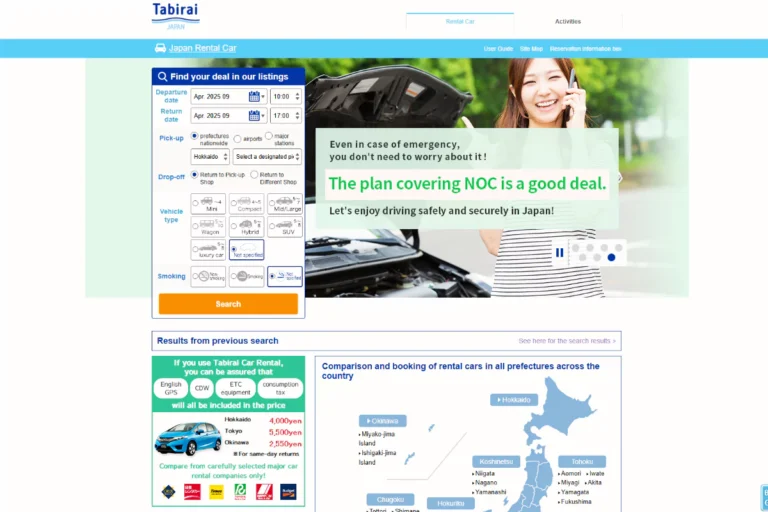
How to pick up your rental car?
If you followed our tip of pre-booking your car rental online, then you simply go to the rental location that you chose to pick-up your car. We always make sure to have a paper version of the booking as a back-up, but honestly nowadays digitally on your phone is fine too.
Pick-up your car
Present your documents and start the check in process!
- Make sure you check the rental agreement and everything is present what you ordered.
- Don’t overlook details like mileage limits, age restrictions, extra fees for additional drivers and restrictions on where you can drive.
- Usually you get a little safety instruction or video as preparation.
- Then they will check the car with you together for any irregularities.
- We always make a full video of the car with photos as extra backup proof of how you received the car.
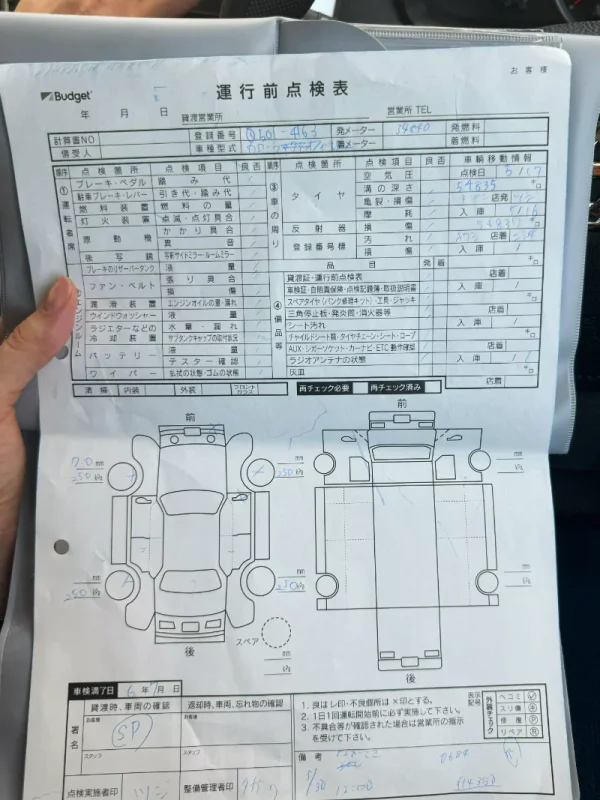
Important Add-Ons and Considerations When Renting
- Full insurance: We always go for a full insurance package as to avoid any extra costs in case of any situation. You usually have a basic package and you should add the Non Operation Charge and Exclusion of Liability compensation system. This way you are fully protected.
- ETC Card Rental (ETC): Rent an ETC card. This handy device lets you breeze through toll booths on Japan’s expressways and lets you pay at the end of your rental period for the usage. Renting a card costs about 300 yen extra. For foreign visitors some companies also offer a KEP pass. With this you’ll pay for unlimited toll roads based on the amount of rental days, and you won’t have to worry about the bill when you return the car. Do note that this is only useful if you plan to use a lot of toll-roads, otherwise it’s best to stick with pay as you go.
- GPS Navigation and Language Options: Ensure your vehicle is equipped with a GPS system that supports English or offline maps. Not all cars and companies automatically provide an English GPS so make sure it specifically states this.
- Fuel Policy and Options: Most rentals operate on a “full-to-full” basis. They will usually tell you how to bring the car back and even give you options for the closest place to fill up on fuel. Don’t forget to bring the receipt, almost all companies require it as proof that you filled up at a fuel station nearby.
- Newly Licensed Driver Sticker: This sticker indicates that you are a new driver so people around you will keep that in mind. You can do this as an extra option, if you are feeling insecure or uncomfortable driving in Japan. Only necessary if you really want it.
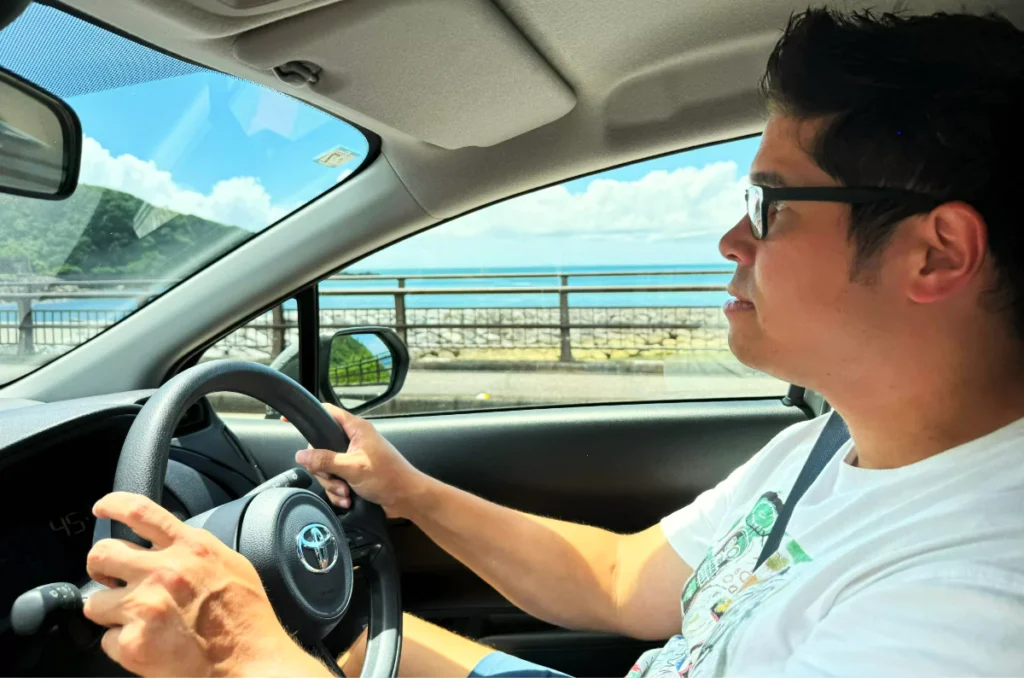
How to drive in Japan
- Left side driving: Driving in Japan is a unique experience, especially for us. We were not used to driving on the left side of the road, but we have a little hack to remember the placement on the road. When taking turns just say out loud: Right side… big turn and Left side… small turn.
- Local driving laws: Make sure you abide by the local driving laws of Japan: this means don’t use your cellphone while driving, left goes before right, wear your seatbelt and when you see a stop sign this means get into a full stop. This is also goes for crossing railroads by the way.
- Japanese road signs: They are typically in both Japanese and English and they are very clear. Just be aware they also have speeding cameras here and yes they work!
- Michi-no-Eki: A fun thing to do when driving long distances, is to stop at a Michi-no-Eki. A roadside stop with all the basics you need, like toilets, food and parking. But also every region will be selling local produce and local crafts. A must visit when driving across Japan.
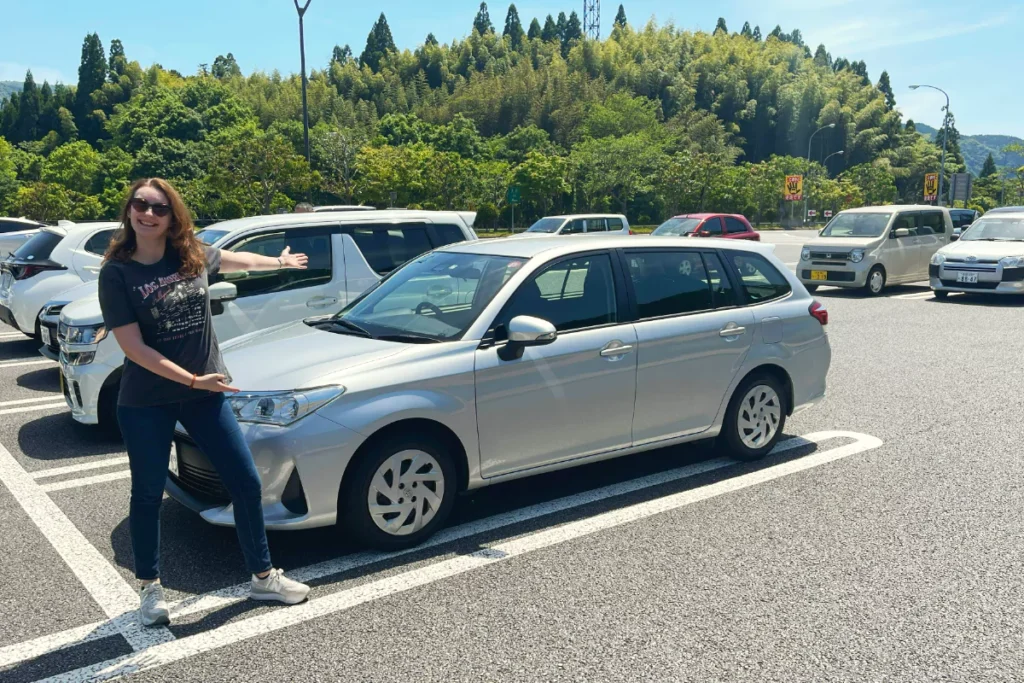
How to Park in Japan
Driving is all fun and games until you have to park. Luckily Japan has plenty of options for parking your car:
- Automated Parking Lots: These facilities use automated systems for payment and guidance, making it efficient, but sometimes a bit intimidating if you’re new to the process.
- Surface Parking Lots: Traditional open-air lots that might be privately or municipally operated. These often have clear markings and are common in suburban areas.
- Underground / Above Ground / Elevator Parking Garages: Especially in busy city centers, these garages provide sheltered parking. Costs may vary throughout the day. For example overnight parking may be cheaper and then starting from 9 in the morning, the hourly rate could go up. Parking garages often have deals with nearby hotels, so if you’re staying at a hotel do inquire about discounted parking tickets.
- On-Street Parking: Look for designated parking zones on the streets. However, these can be very limited in congested areas and may require cash payments via nearby machines.
- Valet Parking: Offered by some high-end hotels and upscale rental locations, this option is convenient though typically more expensive.
- Convenience Store Parking: ONLY allowed for short periods, usually free.
Be prepared for parking fees, cash-only payment machines and tight spots especially during peak travel seasons or after work hours. Always check the signage and time limits to avoid any unexpected fines.
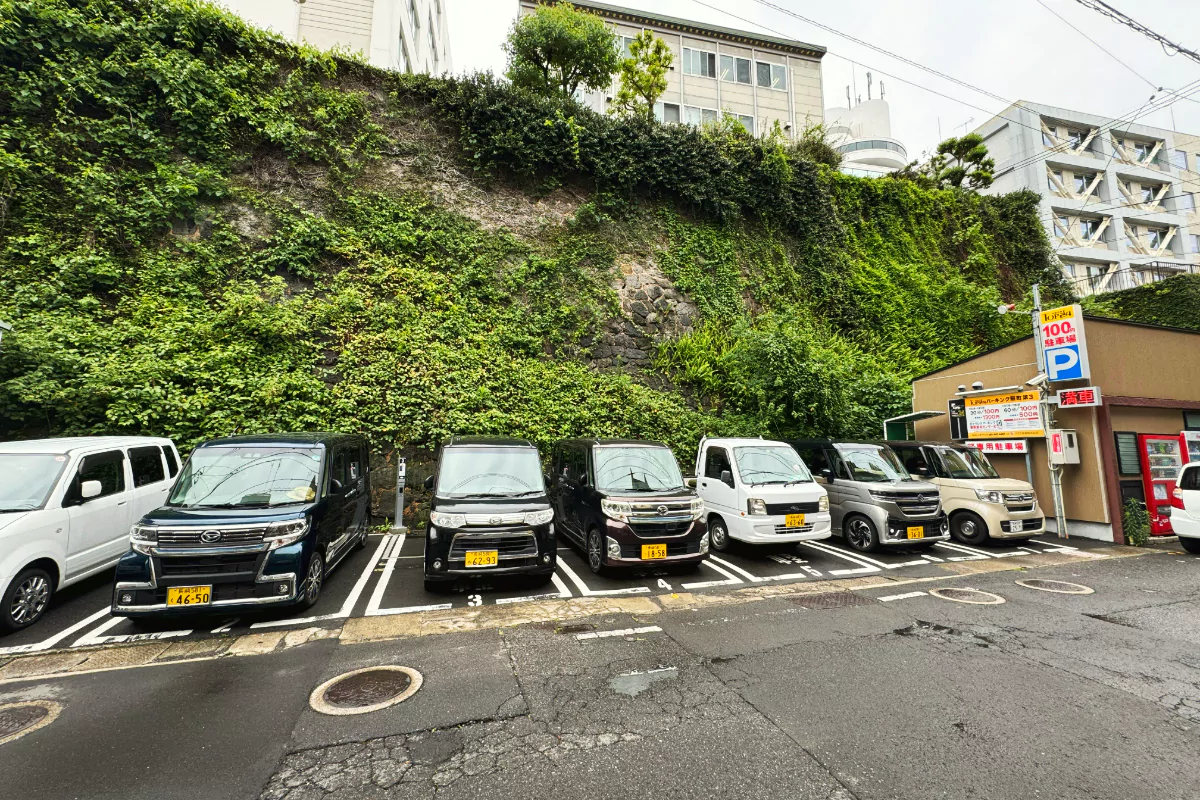
Gas stations in Japan
You have gas stations all across Japan, so no worries about finding one. Some of them close during the night, while others are open 24 hours.
Payment is either by cash or credit card and a liter of regular gasoline costs roughly 180 yen (as of March 2025).
There are two types of stations:
- Full Service gas station: Where you will be helped by an attendant. Park, open your window and shut off your car. Tell the attendant what kind of gas you want, how much and how you will pay. When they’re finished, they may ask which direction you wish to leave and will help you get back into traffic.
- Self-service: This is only with Japanese language menus. If you are having difficulties an attendant should be present to help you. But we did it with google translate, so no problem at all. For this you can either pay at the machine with credit card or inside with cash.
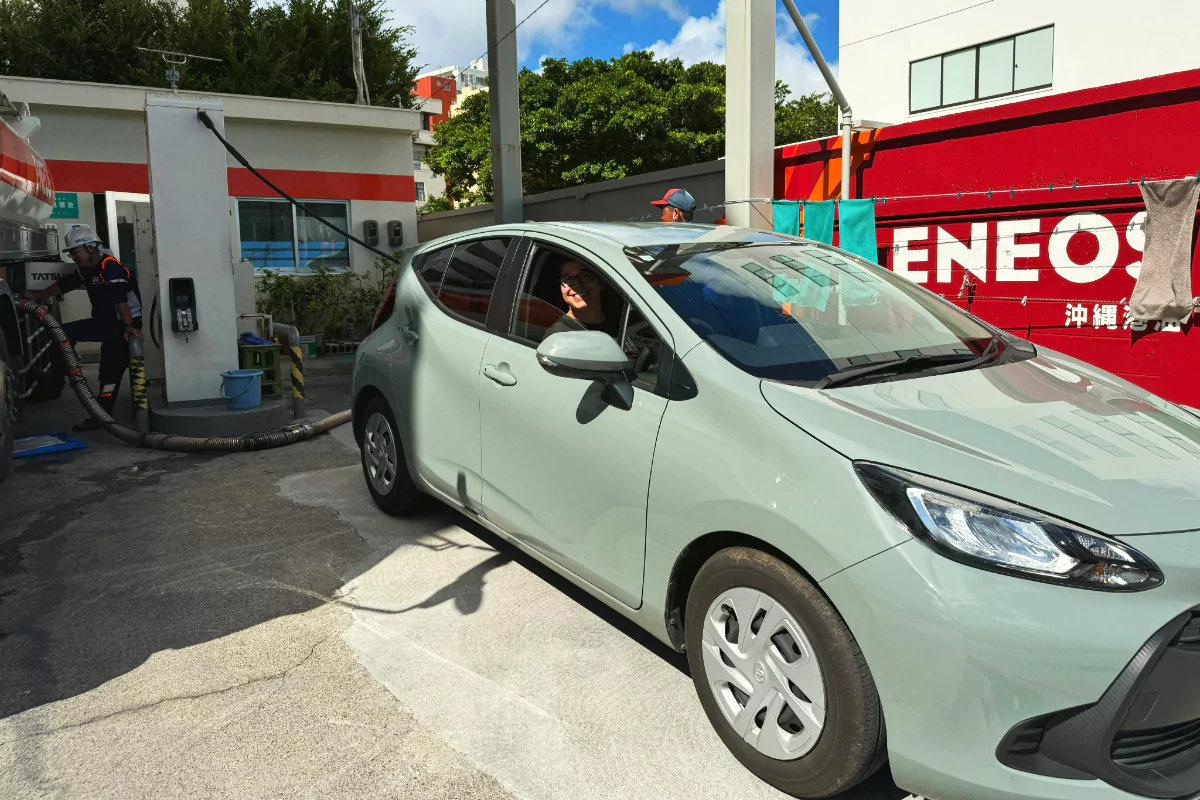
Taking your rental car on the ferry
There are numerous of ferries across Japan to take with your car. The short distance ferries are pretty cheap and it’s easy to bring your car on the boat.
For example we took the Ferry at the Sakurajima Port. Since it’s a regular and scheduled crossing, no reservation was needed. We simply drove up to the window, bought the ticket and the price for one car plus two adults costs us 2850 yen in total.
Taking the car on a short ferry like this is ideal, but when you’re taking a longer ferry the costs will be much higher. In that case we recommend to consider renting a car at the new location and going as a passenger. Also for bigger ferries a reservation is mostly required when you want to bring a car, so that’s another thing to keep in mind.
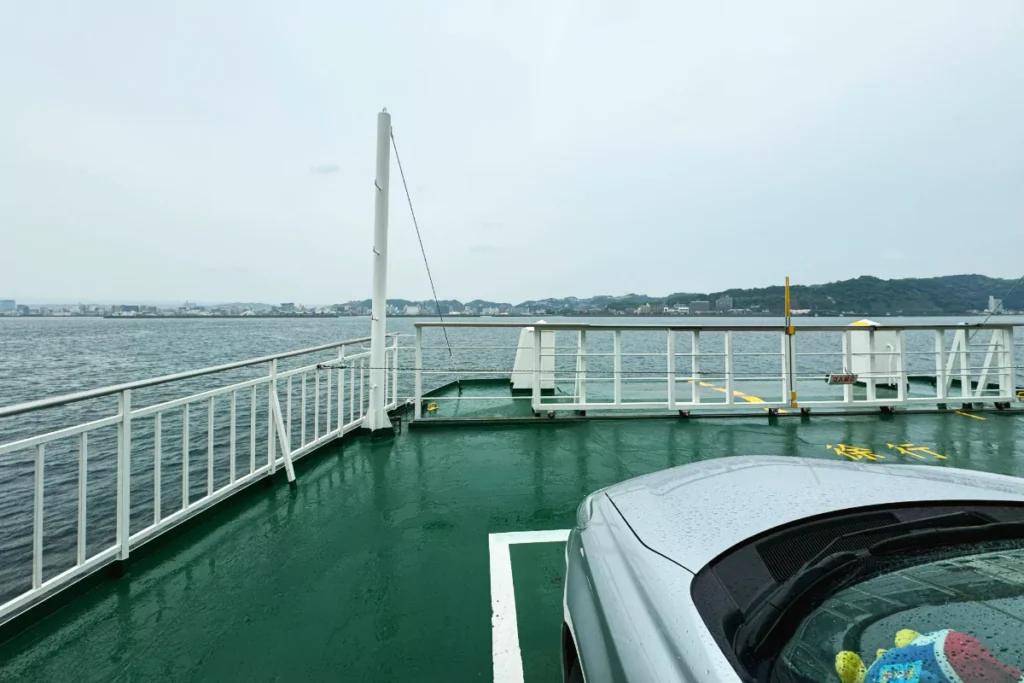
What to Do When Returning the Car
Returning your rental is usually a smooth process.
- Come at the agreed time and park the car in the designated return area.
- Ensure you’ve refueled if required by your rental agreement and don’t forget to bring the receipt.
- Hand over the keys and go through a brief inspection with the rental agent.
- If you took the full insurance then there is nothing to worry about as everything is covered.
- We always make an extra video of the car when handing it in, just to have some backup evidence of the state we left the car. You never know when you might need it!
- Now you just have to pay tollways with your ETC package or if you have unlimited there might still be toll ways that were not included.
And that’s it, you are done! Goodbye car!
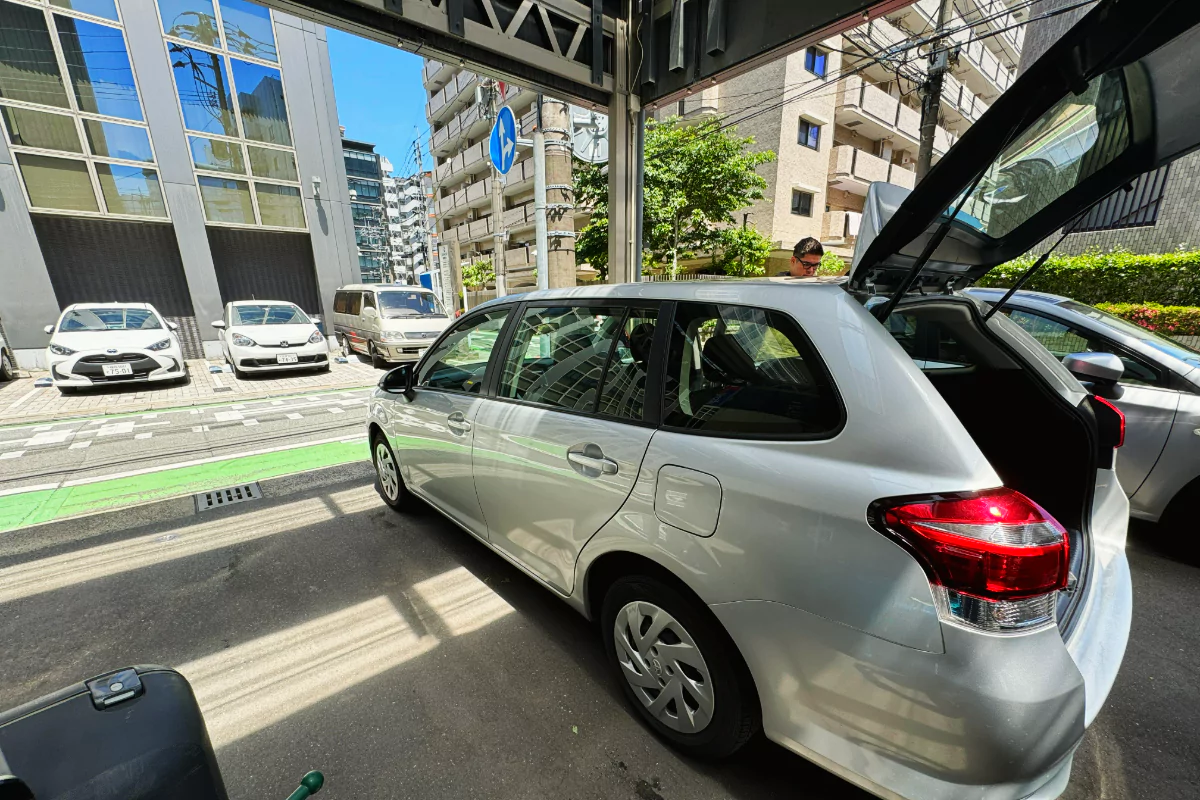
Conclusion – Should you rent a car in Japan?
Renting a car in Japan was the best decision we ever made when visiting this amazing country, and we advise everyone to do the same! You will visit places that you can’t reach by train, have the flexibility to go and stay wherever you want and guess what, it’s not even that expensive compared to public transport.
In summary, renting a car is really easy and Japan is by far one of the easiest and safest countries in the world. Make sure you book your car in advance with full insurance and don’t forget the extra options like: an extra driver, an ETC card and English GPS. Read up on the local rules, see how the signs will look, learn a little Japanese and you’re good to go.
We hope this guide helps you on your next Japan adventure. Thank you so much for reading, byeeee!


Laurens is the co-founder of Yes and Explore, with a background in sports, theater, and bringing people together. He’s happiest when traveling, tasting his way through local dishes, and sharing stories that inspire your next travel adventure.




